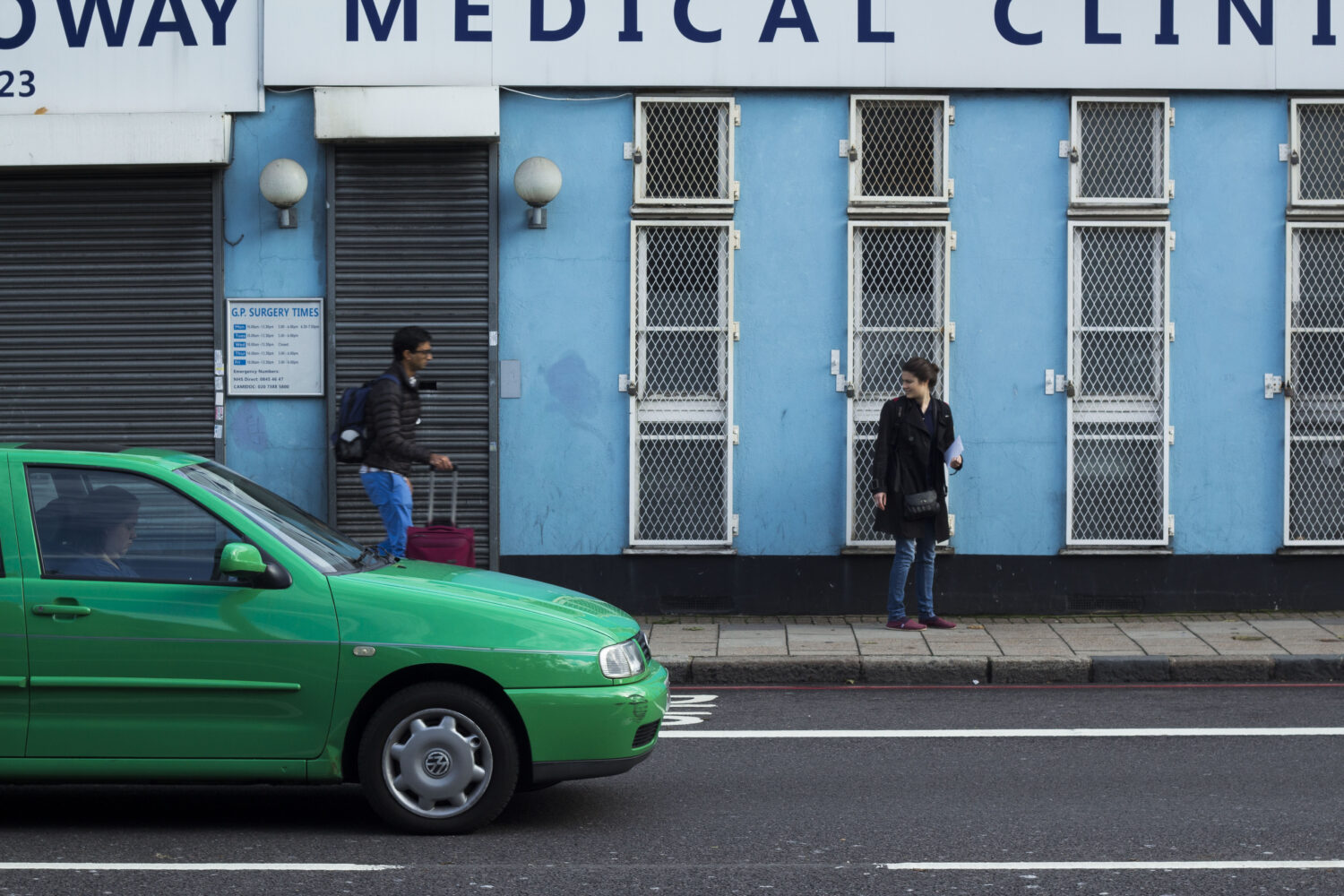Close to home
Services based in the community and focused on patients can fix the NHS, write Tim Reed and John Havard
Keir Starmer and Wes Streeting have articulated what patients and staff already know – that the NHS is “broken but not beaten”.
Patients struggle to access almost all services. Ara Darzi, who has just led an investigation into NHS performance, found A&E departments to be in an “awful state” and cancer mortality to be “appreciably higher” than similar countries. Waiting lists are rising, capital investment is lacking and public satisfaction is at a record low. Staff are exhausted and productivity is falling. Many employees have lost confidence in the ability of politicians and managers to fix things.
Despite these issues, there remains strong public support for the core principles of the NHS: universal coverage, free care at the point of use and funding through general taxation. The system retains the services of many skilled, experienced and committed clinicians and staff.
How have we reached this point?
Patients are more informed and demanding, rightly expecting more from medical care. The population is ageing, and long-term conditions and mental health problems are surging, particularly among children. Lifestyle conditions including obesity are on the rise. All this has resulted in rising demand from a society in distress.
Policy errors in Westminster have compounded the problems. The 2012 Health & Social Care Act fragmented community services and added complexity and cost. The decade of austerity which followed starved services of funding, and political leaders channelled most of what funding the NHS did receive into secondary care. Primary care, once the cornerstone of the NHS model, has been left critically degraded, with static numbers of GPs and a halving of district nurses and health visitors over the past 15 years. There is now frequently no GP available to knit together the many strands of a patient’s care. Faced with hollowed-out community provision, patients turn to A&E, NHS 111, or 999, despite most cases being manageable in a community setting, leading to overcrowded emergency departments and avoidable, expensive admissions to hospital.
The centralised system’s benefits of efficiency, uniformity, and cost control have become outweighed by bureaucracy, complexity and resistance to change.
The stage is set for change
With so many difficulties, some may argue the NHS is no longer sustainable, but we do not accept this position. The new administration has recognised the situation and some of its early pronouncements suggest thinking along the right lines – moving care into the community, working closely with social care, developing neighbourhood practices, and fostering the “family doctor” with her low-tech, high volume, patient-centred approach.
However, history shows that solutions are unlikely to come from the top. Few top-down reorganisations are successful, and some are damaging. We advocate for an evolutionary bottom-up approach, building on existing infrastructure like GP surgeries, federations, and integrated neighbourhood teams, which combine community services and social care. The role of government is to devolve control, and enable and incentivise change from the bottom up, rather than to prescribe solutions itself.
Integrated Care Systems (ICSs) present an opportunity to look at the system in the round. However, hospitals usually dominate these organisations, sometimes pursuing their own interests at the expense of wider goals. There must be a method of mandating funds to reach community services.
This is a 10-year rebuild, so achieving cross-party support is crucial. There may be an argument for government deciding funding levels, and for replacing the semi-autonomous NHS England – which has presided over the widespread collapse of services – with an operationally fully independent body overseeing the health system akin to the way in which the Monetary Policy Committee sets interest rates.
What would a community-based NHS look like?
Nye Bevan’s vision for community-based care remains relevant today. For most people, the GP practice is the preferred setting for receiving medical and social care. An integrated neighbourhood practice would bring together mental health, social care, district nurses, health visitors, pharmacists, GPs, paramedics, physios and many others to work in a single community health team under one roof, using a common IT system.
GP surgeries have a proven history of success in the NHS and offer the natural platform for evolution into integrated neighbourhood practices. Patients should have one or two named GPs responsible for their care, supported by a wider multidisciplinary team able to deliver comprehensive, holistic and personalised care.
In contrast to the fragmented nature of care at present – where, seeking urgent care, patients may call 111 or 999, attend A&E, a walk-in centre, a minor injury unit or an urgent treatment centre – this set-up would allow for the management of the full spectrum of ailments, emergencies, routine care, prevention, minor surgery, chronic conditions, social and mental health issues all in one place, by a single team of clinicians usually known to the patient.
Some community services – such as out of hours urgent care, outpatients and diagnostics – have to be delivered on a larger scale. These could be delivered to populations of around 250,000 patients each by community hubs owned and run by the neighbourhood practices.
With neighbourhood practices and hubs staffed and funded to deliver the full spectrum of medical, social and mental health care 24/7, the hospital would become a referral-only destination dealing solely with those conditions requiring resource-intensive care.
Community practices should operate as not-for-profit entities, independent from top-down management and wholly subcontracted to the NHS. Their independence would offer the opportunity to move away from the current failed, bureaucratic and expensive system of clinical governance with its top-down targets, inspections, performance management, mandatory training, pathways and guidelines. In its place will come accountability to, and involvement of, patients and communities through practice and hub-based systems such as multidisciplinary training, patient involvement, systems review, mentoring, significant event reviews, peer involvement and audit.
Research supports Wes Streeting’s call for continuity of care in these neighbourhood practices. According to a published study of 5 million patients in Norway, long-term relationships with a named GP reduce the need for emergency services, hospital admissions, and even mortality by up to a startling 25 per cent to 30 per cent. The longer the relationship, the more marked the effect.
Most of the community estate will need to be rebuilt to accommodate these enlarged neighbourhood practice teams. A decent working environment, adequate staffing levels and governance designed to improve patient care would help start to restore staff morale.
Where is the money coming from?
At present we are admitting the wrong patients to hospital, spending money on governance which does not work and running numerous different community agencies. The cost of managing patients in hospitals is much higher than community-based care. An elderly patient admitted with confusion due to a urinary infection could incur NHS costs of several thousands of pounds. A child with a fever attending A&E might generate costs of hundreds. Many of these cases could be managed for a few tens of pounds closer to home in a community setting. Emergency admissions represent a major financial burden, accounting for about 40 per cent of all hospital admissions and costing around £17bn annually – more than the entire primary care budget of about £14bn.
As community care has withered, patients have been treated in hospital instead and emergency hospital admissions have doubled since the early 2000s. With sufficient community resources, it would be feasible to reduce such admissions by a third, releasing £6bn – enough to build 500 brand new neighbourhood practices every single year and still have enough left over to increase the primary care staff budget by 50 per cent.
Currently, ambulance and NHS 111 calls are triaged by non-medically trained operators using algorithms erring on the side of caution, often resulting in emergency admissions for cases which could have been managed in the community. By having clinicians at neighbourhood practices and community hubs take over the 111 function, and by integrating ambulance response with hubs, many emergency admissions could be avoided whilst releasing further substantial funds from the £3bn allocated to ambulance and NHS 111 services.
Folding the numerous community agencies into each individual community neighbourhood practice would save on duplicated management structures, obviate cumbersome referral processes and could increase clinician productivity to primary care levels – which are best-in-class across the NHS. At present, several agencies may be working with the same patient. Integrating these services within neighbourhood practices, under the leadership of a GP, would streamline care and reduce costs, improve coordination and clinical leadership, and ensure patients receive holistic, integrated care.
The illustrations above demonstrate there is adequate money to provide excellent patient care through a single, unified, independent community team approach using a low-tech, relationship-based medical model.
What next?
To realise this vision, Streeting’s 10-year plan should consider a number of key changes. We must address staff morale and pay, rebuild the community estate, adopt new forms of governance involving patients and communities, as well as training and attracting back large numbers of staff. The NHS must become less centralised with power devolved to patients, communities and their neighbourhood practices and hubs. The dominant position of hospitals in ICSs requires reform.
None of this is beyond us and the principles are straight forward. It is time for inspired and selfless leadership such as that which Nye Bevan, a hero for many of us, showed more than 80 years ago.
The authors of this piece have — independently of the Fabian Society — created a short video outlining some of their ideas. It can be found here: Community based care model: a whole system solution for the NHS – YouTube
Image credit: Alexander Edward via Flickr


